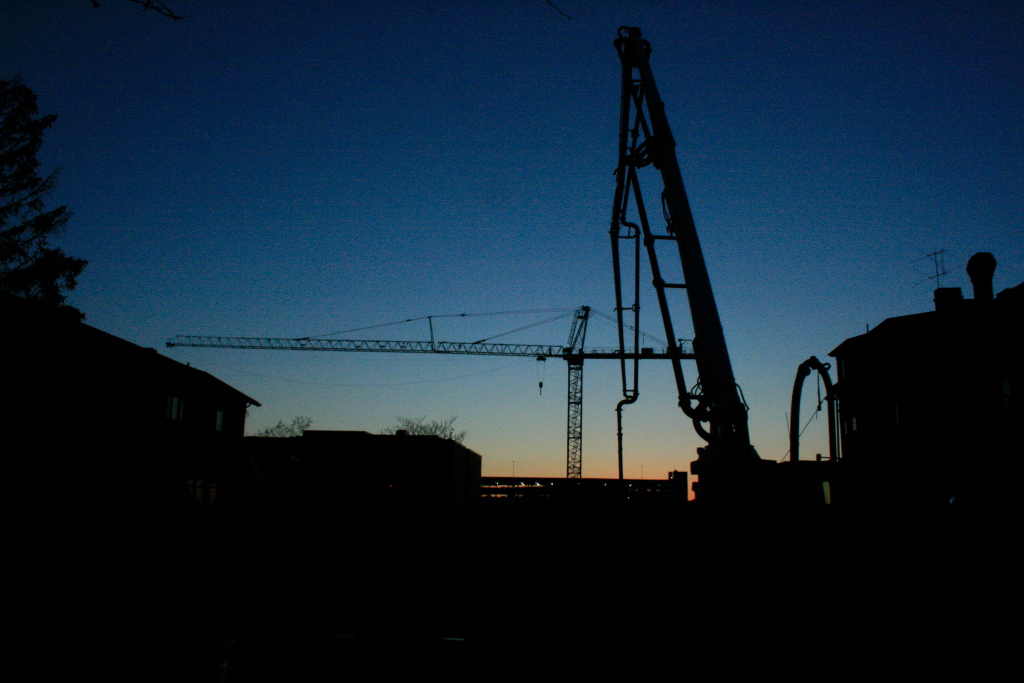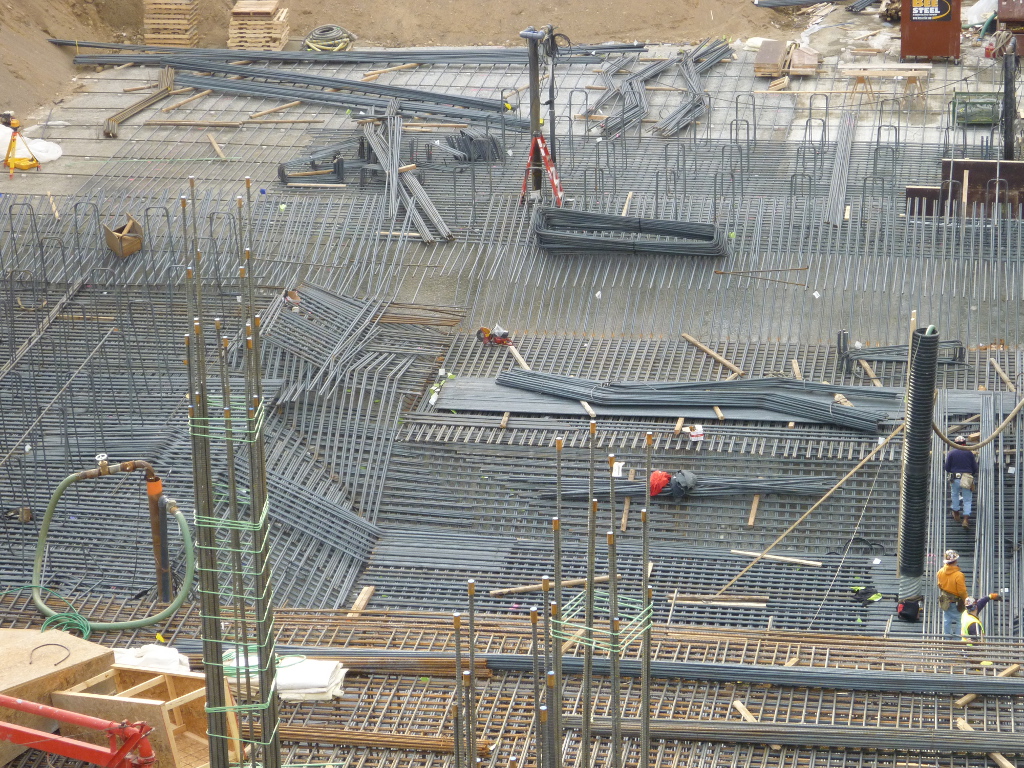
Photo Credit: Alex Mead
When pouring concrete contractors cannot simply begin or end placing concrete at any given location in a structure during a given pour. Due to many reasons, including rebar placements and concrete’s inability to stick to itself once dry, pours need to be done in a manner that completes a predetermined structural element. In some cases, this means pouring thousands of yards of concrete in one continuous operation for hours and even days. Pictured above is a concrete pumper’s boom working into the night on a 2 000 yard pour, comprised of approximately 200 trucks, that lasted more than 12 hours. In the background of the photograph is the job’s tower crane silhouetted against the setting sun.




